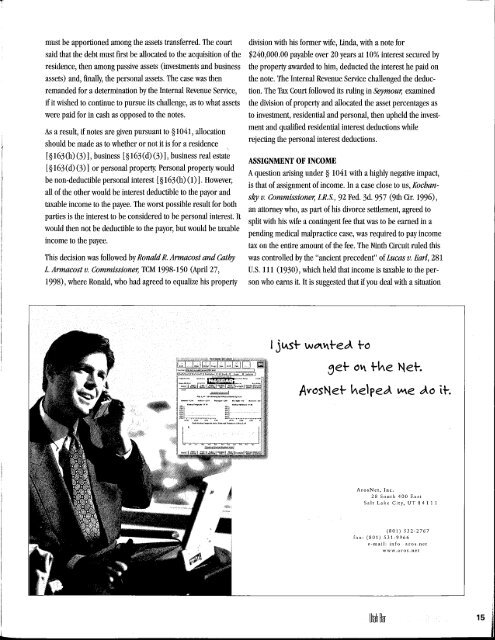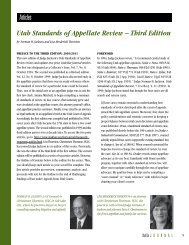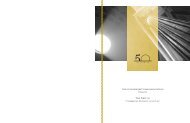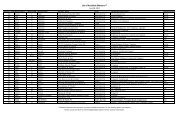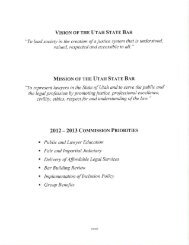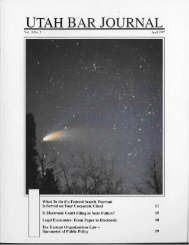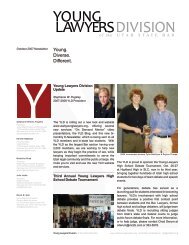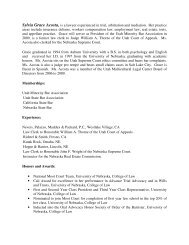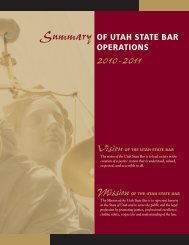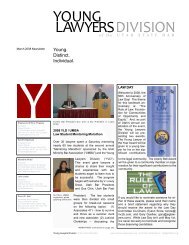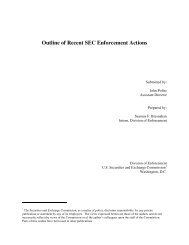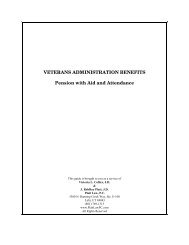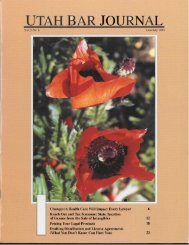March 1999 Volune 12 No3 - Utah State Bar
March 1999 Volune 12 No3 - Utah State Bar
March 1999 Volune 12 No3 - Utah State Bar
Create successful ePaper yourself
Turn your PDF publications into a flip-book with our unique Google optimized e-Paper software.
T<br />
must be apportioned among the assets transferred. The court<br />
said that the debt must first be alocated to the acquisition of the<br />
residence, then among passive assets (investments and business<br />
assets) and, fialy, the personal assets. The case was then<br />
remanded for a determination by the Internal Revenue Servce,<br />
if it wished to continue to pursue its chalenge, as to what assets<br />
were paid for in cash as opposed to the notes.<br />
As a result, if notes are given pursuant to § 1041, alocation<br />
should be made as to whether or not it is for a residence<br />
(§163(h) (3)), business (§ 163 (d) (3)), business real estate<br />
(§ 163(d) (3)) or personal propert. Personal property would<br />
be non-deductible personal interest (§ 163 (h) (1) ). However,<br />
al of the other would be interest deductible to the payor and<br />
taable income to the payee. The worst possible result for both<br />
partes is the interest to be considered to be personal interest. It<br />
would then not be deductible to the payor, but would be taxable<br />
income to the payee.<br />
This decision was followed by Ronald R. Armacost and Cathy<br />
L. Armacost v. Commissioner, TCM 1998-150 (April 27,<br />
1998), where Ronald, who had agreed to equalze his property<br />
division with his former wife, Lida, with a note for<br />
$240,000.00 payable over 20 years at 10% interest secured by<br />
the propert awarded to him, deducted the interest he paid on<br />
the note. The Internal Revenue Servce chalenged the deduc-<br />
tion. The Tax Court followed its rug in Seymour, examined<br />
the division of property and alocated the asset percentages as<br />
to investment, residential and personal, then upheld the invest-<br />
ment and qualed residential interest deductions whie<br />
rejecting the personal interest deductions.<br />
ASSIGNMENT OF INCOME<br />
A question arising under § 1041 with a higWy negative impact,<br />
is that of assignment of income. In a case close to us, Kochan-<br />
sky v. Commissioner, IR.S., 92 Fed. 3d. 957 (9th Cir. 1996),<br />
an attorney who, as part of his divorce settement, agreed to<br />
split with his wie a contingent fee that was to be earned in a<br />
pending medical malpractice case, was required to pay income<br />
tax on the entire amount of the fee. The Ninth Circuit ruled ths<br />
was controlled by the "ancient precedent" of Lucas 1). Earl, 281<br />
U.S. 111 (1930), which held that income is taxable to the per-<br />
son who ears it. It is suggested that if you deal with a situation<br />
I j\Asi- wt'\\t-e~ t-ö<br />
Bet- ö\\ t-~e Net-.<br />
AV'ösNei- ~elpe~ \Ae ~ö it-.<br />
ArosNet, Inc.<br />
28 South 400 East<br />
Satt Lake City, UT 84111<br />
(801) 532-2767<br />
fax, (801) 531-9966<br />
e-mail: info aros.oet<br />
www.aros.net<br />
~ia~ ~ar<br />
15


